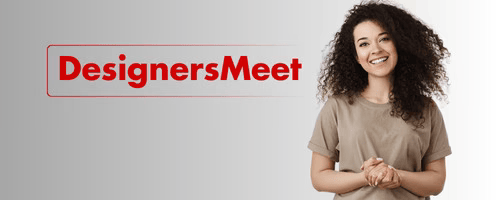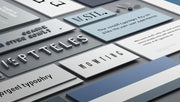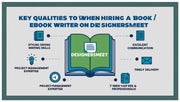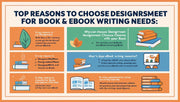Typography plays a crucial role in UI design, influencing readability, user engagement, and the overall aesthetic of digital products. Effective use of fonts and typefaces can guide users through content, establish hierarchy, and reinforce brand identity.
This blog explores the importance of typography in UI design and offers tips to make your text visually appealing and user-friendly.
Why Typography Matters in UI Design
Typography is more than just choosing pretty fonts; it’s about communicating information clearly and enhancing the user experience. Well-executed typography improves comprehension, reduces cognitive load, and creates a cohesive visual language.
Keyword Highlight: typography in UI design, importance of fonts in UI, user-friendly typography
Key Typography Principles for UI Design
1. Choose Readable Fonts
Prioritize legibility by selecting fonts that are easy to read at various sizes and on different devices. Sans-serif fonts like Roboto, Open Sans, and Helvetica are popular for UI design due to their clean appearance.
Keyword Highlight: readable UI fonts, best fonts for user interfaces, sans-serif fonts in UI
2. Establish Hierarchy with Size and Weight
Use font size, weight, and style variations to differentiate headings, subheadings, body text, and captions. This hierarchy helps users scan content efficiently.
Keyword Highlight: typographic hierarchy, font size in UI, text weight for emphasis
3. Maintain Consistency
Consistent typography across all screens and components creates a unified experience and reinforces brand identity.
Keyword Highlight: typography consistency, UI style guide fonts, brand typography
4. Use Appropriate Line Length and Spacing
Optimal line length (45-75 characters) and adequate line height improve readability. Too long or too short lines can tire the eyes.
Keyword Highlight: line length in UI design, line spacing tips, typography readability
5. Pay Attention to Color Contrast
Ensure sufficient contrast between text and background to meet accessibility standards and make content easy to read for all users.
Keyword Highlight: typography color contrast, accessible fonts, WCAG typography guidelines
Trends in UI Typography
-
Variable Fonts: These allow designers to adjust weight, width, and slant dynamically, enhancing flexibility and performance.
-
Bold Typography: Large, bold fonts create strong visual impact and focus attention on key messages.
-
Custom Fonts: Brands increasingly use custom or unique fonts to differentiate their UI and reinforce identity.
-
Animated Typography: Subtle text animations enhance interactivity and engagement without distracting users.
Keyword Highlight: variable fonts in UI, bold typography trend, custom UI fonts
Tools for Typography in UI Design
-
Google Fonts: A vast collection of free web fonts optimized for digital interfaces.
-
Adobe Fonts: Offers a wide range of premium fonts for creative projects.
-
Typekit: Integrated with Adobe Creative Cloud for easy font management.
-
FontPair: Helps designers find font combinations that work well together.
Keyword Highlight: typography tools, best UI fonts resources, font pairing tools
Conclusion
Typography is a powerful tool in UI design that affects usability, aesthetics, and brand perception. By choosing readable fonts, maintaining hierarchy, and ensuring accessibility, designers can create interfaces that communicate effectively and delight users. At DesignersMeet.com, we emphasize smart typography choices to elevate your digital designs.




